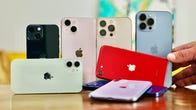In 2021, Apple released four new iPhone 13 models, all of which include a number of significant upgrades like new cameras, bigger batteries, more storage and brighter screens. The iPhone 13 lineup is a delightful upgrade to last year’s already wonderful iPhone 12 family. Including the four iPhone 13 models, Apple currently sells a total of eight variants, ranging in price from $399 for the iPhone SE to $1,599 for the iPhone 13 Pro Max with 1TB of storage.
Apple’s iPhone lineup used to be simple. When Steve Jobs announced the original iPhone over 14 years ago, there was just one phone, exclusively available on AT&T. The only decision you had in 2007 was whether you wanted 4 or 8GB of storage.
Today, there’s an iPhone for pretty much everyone. Miss the home button? Then, check out the iPhone SE. Like the iPhone 13 design, but not its price? Consider last year’s iPhone 12 and 12 Mini. Want a small phone with a good battery life? Then the iPhone 13 Mini is a must. And what about the two-year-old iPhone 11, is it still worth it? In short, yes.
Current iPhones, compared
| Model | Starting price | Screen size | No. of rear cameras | CPU | Release date |
|---|---|---|---|---|---|
| iPhone SE | $399 | 4.7 inches | 1 | A13 Bionic | April 2020 |
| iPhone 11 | $499 | 6.1 inches | 2 | A13 Bionic | September 2019 |
| iPhone 12 Mini | $599 | 5.4 inches | 2 | A14 Bionic | November 2020 |
| iPhone 12 | $699 | 6.1 inches | 2 | A14 Bionic | October 2020 |
| iPhone 13 Mini | $699 | 5.4 inches | 2 | A15 Bionic | September 2021 |
| iPhone 13 | $799 | 6.1 inches | 2 | A15 Bionic | September 2021 |
| iPhone 13 Pro | $999 | 6.1 inches | 3 | A15 Bionic | September 2021 |
| iPhone 13 Pro Max | $1,099 | 6.7 inches | 3 | A15 Bionic | September 2021 |
To complicate your decision, some iPhones have two cameras, others three and others four (including the front-facing selfie camera). There’s also the fact that nearly every current iPhone model has Face ID except one: the iPhone SE. Having a lot of options isn’t bad, but can feel overwhelming when buying a new iPhone.
To help you figure out which is the best iPhone for you, I thoroughly reviewed and tested each one on this list, from their batteries to camera performance. I included current iPhone prices, though iPhone deals are known to happen, so don’t assume your only option is paying full price. Also, this list is based on current models that Apple sells. If you’re shopping around, you might notice that carriers and third-party sellers offer discontinued models, like the iPhone 12 Pro and 12 Pro Max.
Also, if you’re looking for an Android phone or another smartphone outside of Apple’s offerings, read our guide to help find the best phone for your needs.

 \n ","topic":"Phones","ttag":"amazon","variant":"","viewguid":"","event":"listicle|image|1","correlationId":"","assettitle":"","campaign":"amazon","cval":36,"leadCpc":0.36,"leadProdPrice":829,"manufacturer":"Apple","productName":"Apple iPhone 13 (128 GB)","seriesGuid":"367e4304-fc35-47ab-812a-fcf711200337","sku":"MLML3LL\/A","reviewId":"7937e85a-8e37-4de7-8918-2086f5373f73","formatType":"IMAGE","location":"LIST","position":1,"dwLinkTag":"article-body|listicle|image","selector":"#article-body #listicle-5d9321a2-d59d-4e9f-9f47-bc5ec58be086 .itemImage"}}” rel=”noopener nofollow” target=”_blank”>
\n ","topic":"Phones","ttag":"amazon","variant":"","viewguid":"","event":"listicle|image|1","correlationId":"","assettitle":"","campaign":"amazon","cval":36,"leadCpc":0.36,"leadProdPrice":829,"manufacturer":"Apple","productName":"Apple iPhone 13 (128 GB)","seriesGuid":"367e4304-fc35-47ab-812a-fcf711200337","sku":"MLML3LL\/A","reviewId":"7937e85a-8e37-4de7-8918-2086f5373f73","formatType":"IMAGE","location":"LIST","position":1,"dwLinkTag":"article-body|listicle|image","selector":"#article-body #listicle-5d9321a2-d59d-4e9f-9f47-bc5ec58be086 .itemImage"}}” rel=”noopener nofollow” target=”_blank”>
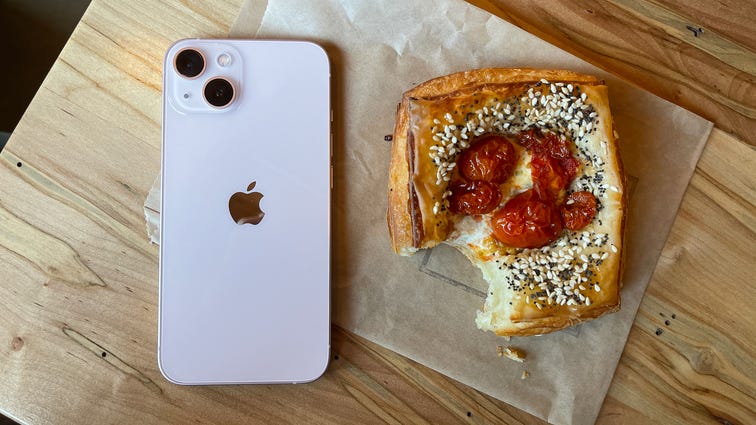

Patrick Holland/CNET
The $829 iPhone 13 is a solid upgrade and refinement to last year’s iPhone 12. Some will be disappointed because it’s not radically different from previous models, but that’s actually part of the charm. Familiarity has been one of the keys to Apple’s success with the iPhone. The iPhone 13 has a nearly identical squared-off design as the iPhone 12. It supports 5G and MagSafe charging.
It comes with new cameras on par with the ones from last year’s top-of-the-line iPhone 12 Pro Max. It also gets a larger battery which in our tests lasted 4.5 hours more on a single charge than the iPhone 12.
Add in the A15 Bionic chip, a new Cinematic mode which is basically a video version of Portrait mode and iOS 15 and you have an excellent phone. The iPhone 13 earned a CNET Editors’ Choice Award. Also, if you activate it on a carrier, Apple drops the price to $799.

 \n ","topic":"Phones","ttag":"amazon","variant":"","viewguid":"","event":"listicle|image|2","correlationId":"","assettitle":"","campaign":"amazon","cval":36,"leadCpc":0.36,"leadProdPrice":1099,"manufacturer":"Apple","productName":"Apple iPhone 13 Pro (Sierra Blue, 256GB)","seriesGuid":"a412258f-9c4d-4864-b6a6-30c51d07b0a7","sku":"MLU03LL\/A","reviewId":"","formatType":"IMAGE","location":"LIST","position":2,"dwLinkTag":"article-body|listicle|image","selector":"#article-body #listicle-0d1f3b98-6202-4942-8e92-2303ee1139dc .itemImage"}}” rel=”noopener nofollow” target=”_blank”>
\n ","topic":"Phones","ttag":"amazon","variant":"","viewguid":"","event":"listicle|image|2","correlationId":"","assettitle":"","campaign":"amazon","cval":36,"leadCpc":0.36,"leadProdPrice":1099,"manufacturer":"Apple","productName":"Apple iPhone 13 Pro (Sierra Blue, 256GB)","seriesGuid":"a412258f-9c4d-4864-b6a6-30c51d07b0a7","sku":"MLU03LL\/A","reviewId":"","formatType":"IMAGE","location":"LIST","position":2,"dwLinkTag":"article-body|listicle|image","selector":"#article-body #listicle-0d1f3b98-6202-4942-8e92-2303ee1139dc .itemImage"}}” rel=”noopener nofollow” target=”_blank”>
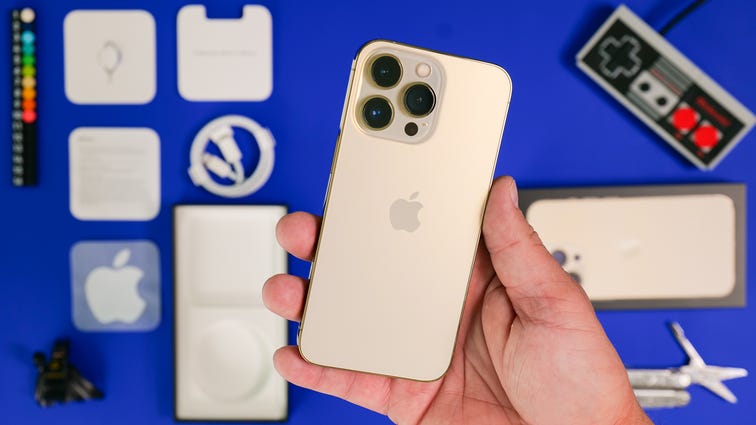

Patrick Holland/CNET
The $1,099 iPhone 13 Pro is the best phone Apple has ever made. With the latest iPhone series, Apple further defined the difference between its Pro and non-Pro phones by packing the 13 Pro with a high-refresh rate display, macro photography mode, ProRes video recording and the best cameras on any iPhone ever made.
In terms of design, the 13 Pro has an elegant matte finish back and shiny stainless steel sides. Compare that to the glossy back and matte aluminum sides on the iPhone 13. The display on the 13 Pro supports what Apple calls ProMotion. Depending on what’s being shown on the screen, the refresh rate switches between 10 and 120Hz. In use, the screen looks stellar. Animations look smooth, graphics appear crisp and even mundane things like scrolling feeds look better.
It runs iOS 15 and supports 5G and MagSafe charging. Like the regular iPhone 13, the 13 Pro has an A15 Bionic chip but gets an extra GPU core which gives the phone a boost for gaming and video editing. The iPhone 13 Pro is stellar, which is why it earned a CNET Editors’ Choice Award. Read our Apple iPhone 13 Pro review.

 \n ","topic":"Phones","ttag":"amazon","variant":"","viewguid":"","event":"listicle|image|3","correlationId":"","assettitle":"","campaign":"amazon","cval":36,"leadCpc":0.36,"leadProdPrice":829,"manufacturer":"Apple","productName":"Apple iPhone 12 (64GB, Purple)","seriesGuid":"","sku":"MJNE3LL\/A","reviewId":"","formatType":"IMAGE","location":"LIST","position":3,"dwLinkTag":"article-body|listicle|image","selector":"#article-body #listicle-9be58235-a0eb-4148-b7a5-942726870a56 .itemImage"}}” rel=”noopener nofollow” target=”_blank”>
\n ","topic":"Phones","ttag":"amazon","variant":"","viewguid":"","event":"listicle|image|3","correlationId":"","assettitle":"","campaign":"amazon","cval":36,"leadCpc":0.36,"leadProdPrice":829,"manufacturer":"Apple","productName":"Apple iPhone 12 (64GB, Purple)","seriesGuid":"","sku":"MJNE3LL\/A","reviewId":"","formatType":"IMAGE","location":"LIST","position":3,"dwLinkTag":"article-body|listicle|image","selector":"#article-body #listicle-9be58235-a0eb-4148-b7a5-942726870a56 .itemImage"}}” rel=”noopener nofollow” target=”_blank”>
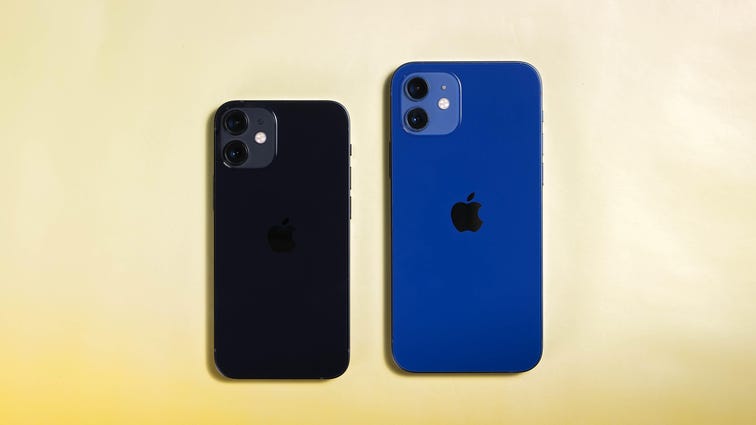

Patrick Holland/CNET
With support for 5G being its crown jewel feature, the $729 iPhone 12 marked the beginning of a new generation of iPhone. It has a flat-sided design with matte aluminum sides, a 6.1-inch OLED screen, an A14 Bionic chip, support for MagSafe charging and Apple’s Ceramic Shield covering on the front to help reduce scratches and damage from drops.
The iPhone 12 Mini is simply a smaller version of the 12 with a 5.4-inch display and a price tag that’s $100 less.
The selfie, wide and ultrawide cameras on the iPhone 12 and 12 Mini are good, but definitely a step down from those on the newer iPhone 13 and 13 Mini. If you choose to get an iPhone 12 or 12 Mini and can afford to pay $50 more, I recommend upgrading from 64GB of storage to 128GB. Also, if you activate either phone on a carrier, the price drops an additional $30. Read our Apple iPhone 12 and iPhone 12 Mini reviews.

 \n ","topic":"Phones","ttag":"ir","variant":"","viewguid":"","event":"listicle|image|4","correlationId":"","assettitle":"","campaign":"ir","cval":35,"leadCpc":0.35,"leadProdPrice":399,"manufacturer":"Apple","productName":"Apple iPhone SE (64GB, White)","seriesGuid":"0f89adcf-1975-4922-a0ca-731f7254c77c","sku":"MHGF3LL\/A","reviewId":"05118402-3cfb-4d7a-af90-4e849298764f","formatType":"IMAGE","location":"LIST","position":4,"dwLinkTag":"article-body|listicle|image","selector":"#article-body #listicle-7d7fc86a-729d-474f-83ea-c737cb8a5d2d .itemImage"}}” rel=”noopener nofollow” target=”_blank”>
\n ","topic":"Phones","ttag":"ir","variant":"","viewguid":"","event":"listicle|image|4","correlationId":"","assettitle":"","campaign":"ir","cval":35,"leadCpc":0.35,"leadProdPrice":399,"manufacturer":"Apple","productName":"Apple iPhone SE (64GB, White)","seriesGuid":"0f89adcf-1975-4922-a0ca-731f7254c77c","sku":"MHGF3LL\/A","reviewId":"05118402-3cfb-4d7a-af90-4e849298764f","formatType":"IMAGE","location":"LIST","position":4,"dwLinkTag":"article-body|listicle|image","selector":"#article-body #listicle-7d7fc86a-729d-474f-83ea-c737cb8a5d2d .itemImage"}}” rel=”noopener nofollow” target=”_blank”>
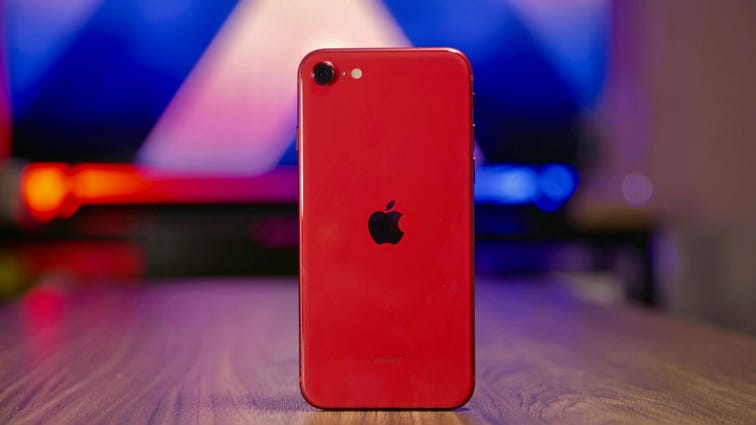

John Kim/CNET
At $399, you might think the only appeal of the iPhone SE (2020) is its price. And admittedly it is the cheapest iPhone on this list, which is a big deal. On the outside, the iPhone SE has the same body as an iPhone 8. It’s the only iPhone on this list that has Touch ID, which in pandemic times is actually a plus, as face masks make using Face ID a frustrating experience.
On the inside, the SE has the same A13 processor as the iPhone 11, which gives the 2017 camera hardware a 2020 injection of Apple’s computational photography magic. The SE supports 4G and is the only phone on this list that has the classic iPhone look with a large black bezel above and below the screen. It can run iOS 15, which makes it as relevant as ever.

 \n ","topic":"Phones","ttag":"amazon","variant":"","viewguid":"","event":"listicle|image|5","correlationId":"","assettitle":"","campaign":"amazon","cval":36,"leadCpc":0.36,"leadProdPrice":729,"manufacturer":"Apple","productName":"Apple iPhone 13 Mini (Blue, 128GB)","seriesGuid":"37f8e545-273f-4fc0-880e-9400f262a95d","sku":"MLHR3LL\/A","reviewId":"","formatType":"IMAGE","location":"LIST","position":5,"dwLinkTag":"article-body|listicle|image","selector":"#article-body #listicle-77bfe271-3191-4494-9f4d-b2bd1baf8c68 .itemImage"}}” rel=”noopener nofollow” target=”_blank”>
\n ","topic":"Phones","ttag":"amazon","variant":"","viewguid":"","event":"listicle|image|5","correlationId":"","assettitle":"","campaign":"amazon","cval":36,"leadCpc":0.36,"leadProdPrice":729,"manufacturer":"Apple","productName":"Apple iPhone 13 Mini (Blue, 128GB)","seriesGuid":"37f8e545-273f-4fc0-880e-9400f262a95d","sku":"MLHR3LL\/A","reviewId":"","formatType":"IMAGE","location":"LIST","position":5,"dwLinkTag":"article-body|listicle|image","selector":"#article-body #listicle-77bfe271-3191-4494-9f4d-b2bd1baf8c68 .itemImage"}}” rel=”noopener nofollow” target=”_blank”>
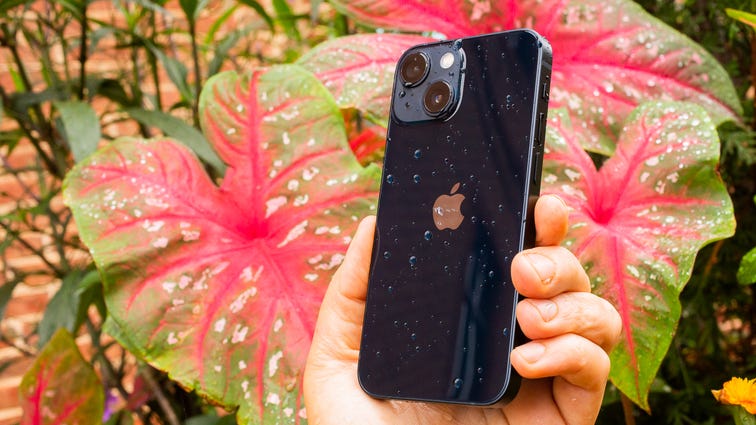

Sarah Tew/CNET
Who said small phones don’t exist in 2021? The iPhone 13 Mini ($729 unlocked, $699 on a carrier plan) is brilliant because it has everything the iPhone 13 has — it’s just smaller. And if you’re worried about battery life, don’t be. The iPhone 13 Mini packs a bigger battery than last year’s iPhone 12 Mini. In our tests, this iPhone mini lasted 3.5 hours longer than the 12 Mini on a single charge. It also lasted an hour longer than the full-sized iPhone 12 in the same test.
Remarkably the 13 Mini has nearly identical wide and ultrawide cameras as last year’s iPhone 12 Pro Max. One way you can tell is the rear cameras are positioned diagonally to each other to make room for the larger stabilized sensor.
The iPhone 13 and 13 Mini are the same phone. But one is small and the other isn’t. That said, I only recommend you get the 13 Mini for its size. It’s $100 cheaper than the iPhone 13, which might be a tempting reason if you’re trying to save money. But if you aren’t OK with a small phone you might be frustrated by its size. Read our Apple iPhone 13 Mini review.

 \n ","topic":"Phones","ttag":"amazon","variant":"","viewguid":"","event":"listicle|image|6","correlationId":"","assettitle":"","campaign":"amazon","cval":36,"leadCpc":0.36,"leadProdPrice":1199,"manufacturer":"Apple","productName":"Apple iPhone 13 Pro Max (256GB, Graphite)","seriesGuid":"e1064f98-218f-4ca4-9672-ec76f633b9a4","sku":"MLKR3LL\/A","reviewId":"6ac8132a-3da7-44d3-a263-4144d8b6b0a0","formatType":"IMAGE","location":"LIST","position":6,"dwLinkTag":"article-body|listicle|image","selector":"#article-body #listicle-df1c79d2-71a8-4422-adf2-20a6146f0968 .itemImage"}}” rel=”noopener nofollow” target=”_blank”>
\n ","topic":"Phones","ttag":"amazon","variant":"","viewguid":"","event":"listicle|image|6","correlationId":"","assettitle":"","campaign":"amazon","cval":36,"leadCpc":0.36,"leadProdPrice":1199,"manufacturer":"Apple","productName":"Apple iPhone 13 Pro Max (256GB, Graphite)","seriesGuid":"e1064f98-218f-4ca4-9672-ec76f633b9a4","sku":"MLKR3LL\/A","reviewId":"6ac8132a-3da7-44d3-a263-4144d8b6b0a0","formatType":"IMAGE","location":"LIST","position":6,"dwLinkTag":"article-body|listicle|image","selector":"#article-body #listicle-df1c79d2-71a8-4422-adf2-20a6146f0968 .itemImage"}}” rel=”noopener nofollow” target=”_blank”>
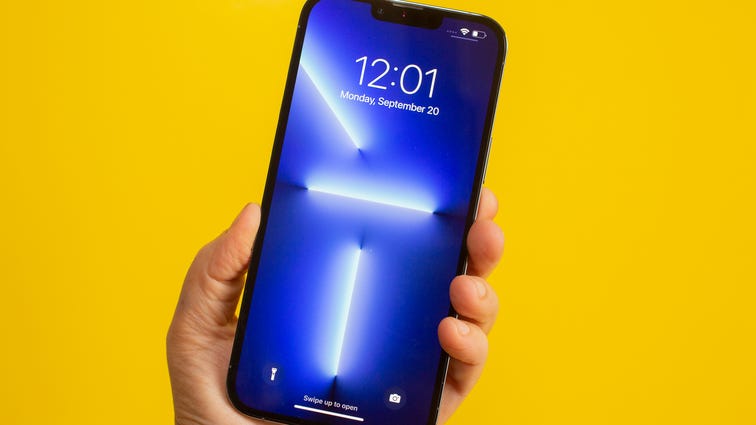

Sarah Tew/CNET
The first thing you should know about the $1,199 iPhone 13 Pro Max, is that in our tests, it has the longest battery life of any phone we’ve ever tested. The next thing you should know is that unlike the 12 Pro and 12 Pro Max, the 13 Pro and 13 Pro Max are identical in pretty much every way and even have the same cameras. In essence, they are the same phone, just different sizes.
The 13 Pro Max has a 6.7-inch ProMotion display, compared to the 6.1-inch one on the 13 Pro. The Max is also bigger and weighs more. Part of that extra weight comes from the 13 Pro Max’s larger battery. If you can handle the size of this phone behemoth, it’s worth every penny of its high price.

 \n ","topic":"Phones","ttag":"ir","variant":"","viewguid":"","event":"listicle|image|7","correlationId":"","assettitle":"","campaign":"ir","cval":35,"leadCpc":0.35,"leadProdPrice":499,"manufacturer":"Apple","productName":"Apple iPhone 11 (Black, 64GB)","seriesGuid":"2d178b34-ff21-4787-a422-be6221e33437","sku":"MHCP3LL\/A","reviewId":"a9dd8dbe-c8ef-424d-9074-2a46c795c2b3","formatType":"IMAGE","location":"LIST","position":7,"dwLinkTag":"article-body|listicle|image","selector":"#article-body #listicle-3c8afbce-420d-4fa1-a82f-405bec80b689 .itemImage"}}” rel=”noopener nofollow” target=”_blank”>
\n ","topic":"Phones","ttag":"ir","variant":"","viewguid":"","event":"listicle|image|7","correlationId":"","assettitle":"","campaign":"ir","cval":35,"leadCpc":0.35,"leadProdPrice":499,"manufacturer":"Apple","productName":"Apple iPhone 11 (Black, 64GB)","seriesGuid":"2d178b34-ff21-4787-a422-be6221e33437","sku":"MHCP3LL\/A","reviewId":"a9dd8dbe-c8ef-424d-9074-2a46c795c2b3","formatType":"IMAGE","location":"LIST","position":7,"dwLinkTag":"article-body|listicle|image","selector":"#article-body #listicle-3c8afbce-420d-4fa1-a82f-405bec80b689 .itemImage"}}” rel=”noopener nofollow” target=”_blank”>
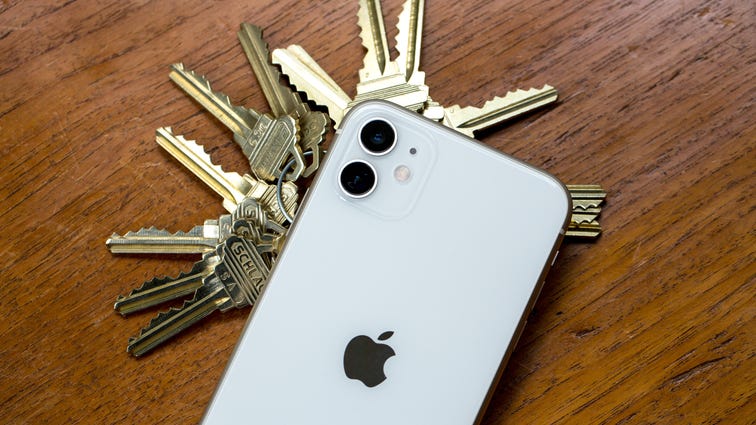

Angela Lang/CNET
If you don’t need support for 5G, the iPhone 11 at $499 is a good deal, even in 2022. You get so much for that price like an A13 processor, good cameras, a solid battery life and the choice of six colors. The 11 has curved sides in contrast to the straight-sided 12 and 13 series.
The biggest drawback is the old style screen which uses an LCD panel instead of a nicer OLED one. But don’t let that turn you away, the screen still looks good in use. If you have an extra $50 in your budget, I recommend getting the 128GB version of the 11.
